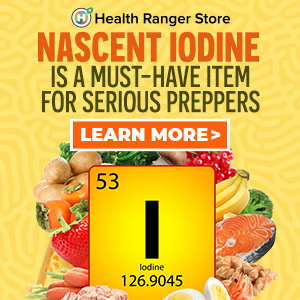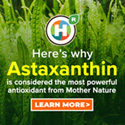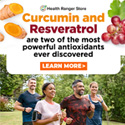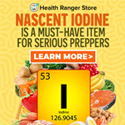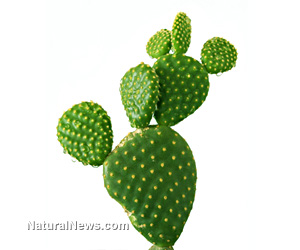
Prickly pear: discover the healing power of an ancient Aztec superfood
Saturday, March 01, 2014 by: Carolanne Wright
Tags: prickly pear, cactus, medicinal plants
- TAKE IT DOWN Act advances in Congress amid free speech concerns
- Gardening tips: 15 Simple tricks to double your garden’s yield this season
- Survival 101: Dangerous places to avoid when disaster strikes
- Nature’s arsenal: How plant compounds power military survival and healthcare in crisis
- Kawasaki unveils rideable ROBOT HORSE powered by hydrogen
- DOJ and ATF kill Biden’s “Zero Tolerance” firearms dealer policy
- Hospital staffers sound alarm after 10 nurses were diagnosed with BRAIN TUMORS
- Amazon's Kuiper satellite launch delay highlights uphill battle against Musk's Starlink
- Barley: A nutrient-dense ancient grain with modern benefits
- Criminal referral requests filed against Fauci and top COVID officials in seven states
- “Prepare Tribe: Prepare, Protect, Provide” on BrightU: How to build a disaster-proof shelter in the middle of nowhere
- New studies ignite debate: Fluoride linked to autism and ADHD, prompting calls for policy reassessment
- Germany prepares students for war amid growing security concerns
- Sovereign debt paradox: U.S.-China mutual holdings fuel geopolitical tensions
- Rafael Medoff explores the role of Jabotinsky in the rise of Revisionist Zionism in “Militant Zionism in America”
- Widespread social and economic unrest: Steve Quayle issues urgent financial warning of imminent asset collapse in new interview with Mike Adams
- Israeli lobbyists boast of controlling US national security policy in leaked AIPAC audio
- Yoga and autism: A science-backed look at how a simple practice is transforming behavior and movement in children with ASD
- Tulsi Gabbard leads charge against the Biden regime’s global censorship of the 'Disinformation Dozen'
- Fauci is back in the limelight, and he’s busy promoting a future COVID or FLU pandemic
- Aerosolized bioweapons? Strange “diploid biomasses” falling out of the sky in Florida captured under the microscope
- Analysis: The coming economic collapse, a mass uprising and Trump's three secret weapons to halt the growing revolt
- Widespread social and economic unrest: Steve Quayle issues urgent financial warning of imminent asset collapse in new interview with Mike Adams
- Kiss Your Genetic Privacy Good-Bye! 23andMe Gets Green Light to Sell Your Intimate Genetic Details to Anyone They Want
- Tulsi Gabbard takes aim at censorship: Justice for the ‘Disinformation Dozen’
- Mike Adams releases country western hit single: Goin’ Back in Time is Comin’ Home
- U.S. lawmakers investigate Meta over alleged China collaboration
- CLOT SHOT PLANDEMIC UNFOLDING: Fibrous, rubbery clots caused by covid injections have prion-like seeding activity
- Chemtrails unveiled: How the CIA and Big Business are manipulating the weather for profit
- How Israeli military-connected corporations are secretly controlling your online privacy
- European Court of Justice: Healthcare professionals who promoted or administered COVID-19 vaccines are CRIMINALLY LIABLE for any harm caused
- DEATH by VACCINE or face PRISON time: Canadian Freedom Convoy leaders CONVICTED for protesting forced vaccination during the Covid Plandemic
- Defunding DEADLY mRNA jabs: Government funding for mRNA technology being scrutinized and sidelined until proven "safe and effective" for real
- Federal employees whine over DOGE's new directive requiring them to do a 5-point summary of weekly accomplishments
- U.S. approves new Russian ambassador as diplomatic thaw continues
- Curcumin’s ancient healing power supercharges muscle recovery, and its effects are compounded with anti-inflammatory foods and supplements
- Newly released JFK files reveal Pentagon's role in creating Lyme disease and covid in the same lab
- Analysis: The coming economic collapse, a mass uprising and Trump's three secret weapons to halt the growing revolt
- Mike Adams releases country western hit single: Goin’ Back in Time is Comin’ Home
- Aerosolized bioweapons? Strange “diploid biomasses” falling out of the sky in Florida captured under the microscope
- Kiss Your Genetic Privacy Good-Bye! 23andMe Gets Green Light to Sell Your Intimate Genetic Details to Anyone They Want
- Dr. Mike Yeadon releases 15-minute testimony - WATCH - about genocidal intent of COVID “vaccines”
- Trump reverses course on Gaza plan, says “nobody is expelling Palestinians”
- MEDICAL BOMBSHELL: FDA admits Covid mRNA 'Vaccines' CAUSE CANCER
- European Court of Justice: Healthcare professionals who promoted or administered COVID-19 vaccines are CRIMINALLY LIABLE for any harm caused
- The Health Ranger releases “Vaccine Zombie” song and music video, using AI-animated zombies for the music video
- 5 Simple steps to boost your brainpower: How to strengthen executive function in a distracted world
- A lack of integrity in Academia: Harvard professor found GUILTY of fraudulent research to promote CRT theory
- Federal employees whine over DOGE's new directive requiring them to do a 5-point summary of weekly accomplishments
- EPA advisor admits the agency is funneling billions to climate groups ahead of Trump’s return to White House
- California's social media censorship law struck down: A victory for free speech or a threat to online safety?
- Space war brewing? Russia threatens to destroy Starlink satellites
- Survival 101: Effective EMF blocking techniques
- Rep. Nancy Mace introduces bill to ban biological males from female facilities on federal property
- Red Cross issues warning to stop blood plasma donations from vaccinated people
- Scientists confirm: GENIUS brain function can be spontaneously unleashed in humans without any apparent cause
- EPA advisor admits the agency is funneling billions to climate groups ahead of Trump’s return to White House
- HYSSOP: What research reveals about the health benefits of this ancient holy herb
- Two containers with completed ballots fall out of truck in Florida
- Newly released JFK files reveal Pentagon's role in creating Lyme disease and covid in the same lab
- Global leaders unite to clamp down on “misinformation” with UN-backed Cascais Declaration
- BREAKING: 2025 NDAA authorizes mandatory military draft of WOMEN across America… as Pentagon pursues global NUCLEAR war with both Russia and China at the same time
- Michael Yon warns of a ZIONIST TAKEOVER in Trump’s second administration
- Ozempic and Wegovy weight loss drugs are injectable LIZARD VENOM PEPTIDES that may unleash a devastating wave of organ failure… side effects align with symptoms of SNAKE BITES
- The Health Ranger releases “Vaccine Zombie” song and music video, using AI-animated zombies for the music video
- Mike Adams releases country western hit single: Goin’ Back in Time is Comin’ Home
- BOMBSHELL: DNA testing kits are a SCAM to develop ethnic-specific bioweapons
- Israeli soldiers accused of even more torture and abuse in the West Bank
- These 13 countries just signed an agreement to engineer a global FAMINE by destroying food supply
- NASA admits that climate change occurs because of changes in Earth’s solar orbit, and NOT because of SUVs and fossil fuels
- Fully vaccinated about to see “tsunami” of illness and death, warns virologist
- RFK Jr. clears key hurdle: Sen. Susan Collins backs controversial HHS nominee, signaling a new era for health policy
Native to the mountainous areas of Mexico, prickly pear cactus has been used since ancient times as a potent medicine, as well as a daily food source. Many of the nutritional advantages of the plant are attributed to its growing habitat - namely, volcanic soil and high altitude. The Aztecs so valued prickly pear that it was considered food fit for warriors and royalty. Jump to the present day and you'll find health enthusiasts have also embraced the food for boosting stamina, improving health and slimming down.
Health perks
A common sight in Hispanic communities and Latin America, cactus as a food may seem exotic to those unfamiliar with its use. And yet, science is beginning to recognize prickly pear as a beneficial food and therapeutic medicinal for many of the health disorders plaguing us today. One of the more intriguing uses for the cactus paddle (known as nopales) is in the treatment of diabetes. As a low-glycemic, high-fiber food, nopales lowers blood sugar levels, helping to keep obesity and diabetes at bay. Moreover, research published in Chemistry Central Journal found that consuming either tortillas or bars made with nopales increased vitamin C plasma levels, and reduced both cholesterol as well as triglycerides - which is good news for those concerned about cardiovascular disease.As an added benefit, the plant sterols found in prickly pear act as antioxidants in the system, reducing inflammation and deterring the formation of plaque on blood vessel walls. What's more, the flavonoids present in the cactus minimize free radical load, which lessens the strain on the liver and boosts overall immunity. Since the fruit and leaves of the plant are loaded with non-carbohydrate polysaccharides in the form of pectin, hemicellulose and mucilage, prickly pear soothes and coats the digestive tract, relieving constipation as well as ulcers.
How to use
Fresh prickly pear nopales and fruit can often be found in your local supermarket - just be cautious about the source as some varieties from Mexico are contaminated with a potent neurotoxic pesticide. Tortillas and fruit bars made from prickly pear are also available. Additionally, organic nopales powder is an easy way to spruce-up your favorite smoothie. If you are lucky enough to have prickly pear cactus growing wild in your neighborhood, have a look at this informative tutorial on how to harvest and juice the fruit.Sources for this article include:
http://science.naturalnews.com/pubmed/21371324.html
http://hortsci.ashspublications.org/content/25/12/1515.full.pdf
http://www.ehow.com/about_5422329_nopales-cactus-health-benefits.html
http://www.nutrition-and-you.com/nopaleses.html
About the author:
Carolanne believes if we want to see change in the world, we need to be the change. As a nutritionist, wellness coach and natural foods chef, she has encouraged others to embrace a healthy lifestyle of green living for over 13 years. Through her website www.Thrive-Living.net she looks forward to connecting with other like-minded people who share a similar vision.
Follow on Facebook: www.facebook.com/pages/Thrive-Living/4995788...
For Pinterest fans: www.pinterest.com/thriveliving/
Find at Google+: www.goo.gl/cEZiyR
Diaspora*: carolanne@pod.orkz.net
Tsu: www.tsu.co/ThriveLiving
and Twitter: www.twitter.com/Thrive_Living
Read her other articles on Natural News here:
www.naturalnews.com/Author1183.html
Prickly pear at FETCH.news
Get independent news alerts on natural cures, food lab tests, cannabis medicine, science, robotics, drones, privacy and more.
Take Action: Support Natural News by linking to this article from your website
Permalink to this article:
Embed article link: (copy HTML code below):
Reprinting this article:
Non-commercial use OK, cite NaturalNews.com with clickable link.
Follow Natural News on Facebook, Twitter, Google Plus, and Pinterest
Science News & Studies
Medicine News and Information
Food News & Studies
Health News & Studies
Herbs News & Information
Pollution News & Studies
Cancer News & Studies
Climate News & Studies
Survival News & Information
Gear News & Information
News covering technology, stocks, hackers, and more



"Big Tech and mainstream media are constantly trying to silence the independent voices that dare to bring you the truth about toxic food ingredients, dangerous medications and the failed, fraudulent science of the profit-driven medical establishment.
Email is one of the best ways to make sure you stay informed, without the censorship of the tech giants (Google, Apple, Facebook, Twitter, YouTube, etc.). Stay informed and you'll even likely learn information that may help save your own life."
–The Health Ranger, Mike Adams






















